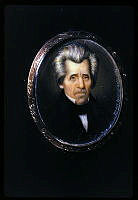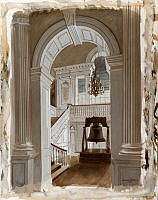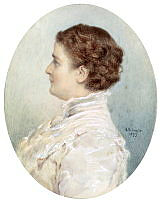The Liberty Bell, Independence Hall, White House Collection
This watercolor by Gustav Ketterer is of the Liberty Bell in the foyer of Independence Hall in Philadelphia, Pennsylvania. Ketterer's style is detailed and realistic, with the famous bell on display on the ground level of the hall, surrounded by a stairwell and balcony.
























